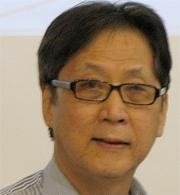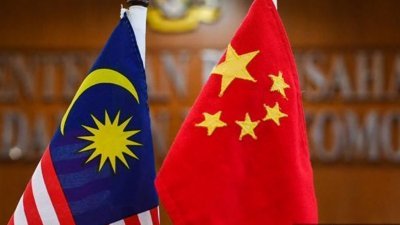以下是10年前,我在中国之行的报告。尽管中国在进步,也在今年庆祝中共建党100周年,但我10年前中国之行的看法至今基本没有变。就如中国谚语“一分耕耘,一分收获”,在今天同样适用。
上海,2010年11月10日: 在过去两周的8天,我一直在上海和厦门。这是我15年后,再一次踏入中国。尽管我在电视上读到并看到了这里发生的许多变化和发展,尤其是过去十年所发生的变化和发展,但一时之间,我还是没有做好准备,面对中国和其人民如此的转变。
第一个惊讶是抵达上海浦东国际机场时。这只是一个在10年前(1999年)启用的巨大机场,就货运量而言,当时其已是世界第三大最繁忙的机场。预计几年后其将成为世界上最繁忙的货运和客运交通枢纽。
第二个惊讶是上海磁浮列车,我们能在机场两个客运大楼之间的车站,直接搭磁浮列车到浦东市中心。这是世界上第一个商业化磁浮列车服务,在7分钟内将我们送到了市中心,最高时速达到了431公里。我的团员几乎没有时间坐下放松,就不知不觉,已经到达了市中心的龙阳站。
落地上海后一个小时内的感受,显而易见的是,中国展现了在人力资源发展上的效率和细致;以及如何运用科学和技术的发展,改善地球上这个人口最多的国家之民众生活方式。上海本身就有超过2000万人口。想想这一个城市,等于马来西亚3/4人口挤在其中,如何安排这些人的生活,提供工作机会、住房、社会服务、交通和城市生活的其他便利设施。这提供一些关于中国面临著的前所未有挑战,大规模和庞大的发展局面,以及其在克服这些挑战道路上取得的良好表现。
令人难以置信的发展需求
我们的上海世博会之行,也许就是最好的例证,如何妥善的满足庞大人口的共识。上海世博会是一个庞大的博览会,在高峰期,一天12小时内须接待超过100万人。这需要精准的安排和管理,涉及了百万人的门票、展地、食物、厕所、医疗设备和交通安排等。
这同时是一个要应对超过6个月展期的后勤噩梦——据估计,在世博会结束之前,将引来超过7000万人次入场,对我来说至今依然还有的印像就是,现场的非凡建设和令人难忘的景象和音响,干净、愉快和友善的环境,以及站在任何人都难以想像的长长有序队列中排队入场。
令人震惊的不仅仅是中国的大规模和快速的经济发展。我们也可看到文化和日常生活上的活力——至少在我们花数小时在南京街、外滩地区和新天地附近一带闲逛时,都可察觉到。在石库门区,我们目睹了古屋修复计划,如何让破旧的旧建筑注入了新的活力,将它们改造成餐厅、精品店和工艺品商店。
新天地无疑是亚洲历史城市重建的最佳典范。当地人指出,这个历史区域获得保存和发展,是由于中国共产党就诞生于该地区的一座古老建筑中。该地区的开发许可证规定,必须保留当年毛主席和党同志开会讨论重建中国大计的建筑物。
今天,这座博物馆——中共第一次全国代表大会会址──讽刺地矗立在可能是中国资产阶级和资本主义高尚生活象征的中心。
中国还有漫长之路
毫无疑问,中国要成为一个高度发达的国家还有很长的路要走,很多事情仍然会出错。中国大部分地区和人民仍然很穷。然而,这次行程给我留下的不可磨灭印象之一,就是中国民众对生活和未来将逐渐改善充满了信心,也对国家前景充满乐观。
事实上,中国的顶级智库中国社会科学院估计,到2050年时,中国将成为世界第二强国。从我所看到的而言,这似乎是一个谦虚的预测。
值得注意的是,该报告并没有对中国的局限性轻描淡写。该报告警告说,中国在高端人才、文化、教育、卫生、科技等方面的核心竞争力,依然无法与其在世界的排名相匹配。例如,中国的高端人才指数只有美国的8.3%,日本的10%,这显示人力资源领域差距较大。
在高等教育领域,中国的指数仅为欧盟的10%,美国的1/3。尽管中国在2008年高等教育竞争力排名第四,但一流大学大部分仍位于欧盟和美国。报告还称,中国的科技竞争力指数不及美国的1/3。在美国,有329所著名的科技和工艺的大学或机构,而中国祇有61所。
尤其具有启发意义的是,该报告包含有关中国成就和缺点的正面和负面之数据。该报告随后发表在中国主要的英文报纸《中国日报》上,也没有刻意去扭曲解读排名数据或对排名方法提出质疑——这种在我们大学对涉及本身国际排名低落报导出现在媒体时,都会尝试回应的方式。
在某种层面上,与世界上一些民主国家相比,中国的制度和媒体——尽管嵌入在一党制国家体制中——但他们相对的更独立,也对政策和政府制度更有批判的精神。
林德宜《中国崛起面对的挑战》原文:Many Challenges for China Rising
Below is a report of a trip to China 10 years ago. Despite the nation’s progress and the celebration of the 100th anniversary of the Communist Party of China, my observations from the trip remain mainly unchanged today. The Chinese saying applies just as much today “一分耕耘,一分收获”.
Shanghai Rising, 10 November 2010
During eight days of the last two weeks, I have been in Shanghai and Xiamen. This was my first trip to China in 15 years. Although I had read of and seen over television the many changes and developments taking place there especially in the past decade, I was not prepared for the new China that is transforming itself and its people literally by the hour.
The first surprise was arrival at Shanghai’s Pudong International Airport. Opened just over 10 years ago, this is an enormous airport which is already the third busiest in the world in terms of freight traffic. Expectations are that it will be the busiest in the world for freight and passenger traffic in a few years time.
The second surprise was the Shanghai Maglev train which runs from its station situated between the two passenger terminals to downtown Pudong. This – the world’s first commercial maglev service - whisked us to the city center in 7 minutes and reached a top speed of 431 km an hour. My team had barely enough time to sit down and make ourselves comfortable when before we knew it, we had arrived at Longyang station in the city center.
What was apparent within the hour after landing in Shanghai is the efficiency and meticulousness with which China is developing its human resources; and the way in which science and technology are being used to improve the lives of the largest mass of humanity on earth. Shanghai itself has more than 20 million inhabitants. Think of a city in which three quarters of Malaysia’s total population is being cramped into, and the need to organize the lives of these people and provide them with jobs, housing, social services, transport and the other amenities of city life. This will provide some idea of the scale of development and mammoth and unprecedented challenge that China faces, and which it appears well on its way to successfully conquering.
Mind Boggling Scale of Development Needs
This ability to organize a huge number of people towards a common end was perhaps best exemplified by a trip to the Shanghai World Exposition. This is a giant fair in which at its peak over one million people enter over a 12 hour period to spend the day. Consider the clockwork precision and management needed to provide tickets, stands, food, toilets, health facilities, and transport, for one million people.
And to handle this logistical nightmare over a six month period – it is estimated that more than 70 million people will have attended the Exposition before it ends. The lasting impression for me is of remarkable architectural forms and memorable sights and sounds in an environment of cleanliness, cheerfulness and goodwill, whilst standing in the longest orderly queues that anyone could imagine.
It is not just the scale and breakneck economic development that is staggering. It is also the vibrancy of the cultural and everyday life - at least as it was found in Nanjing street, the Bund area and the neighbourhood of Xin Tian Di where we spent hours cruising the streets. In old Shikumen, we gawked at a restoration programme that has breathed new life into old dilapidated buildings transforming them into restaurants, boutiques, and arts and crafts shops.
Xin Tian Di is without doubt the finest example of historical urban redevelopment in Asia. The locals point out that the preservation and cultural renaissance of this historic area is due to the birth of the Chinese Communist Party in one of the old buildings found in the area. The permit for development of the area carried a stipulation that the building where Chairman Mao and his comrades met to discuss their plans for the rebirth of China had to be preserved. Today, this museum piece building – the First Communist Party Hall – ironically stands in the center of what is probably the icon of bourgeoisie and capitalist high life in China.
Long Way Still for China
Undoubtedly, there is still a long way for China to go before it is a highly developed country and many things can still go wrong. Much of China and the Chinese people are still poor. However, one of the indelible impressions from the trip is of the sense of confidence amongst ordinary people that their lives have improved, and will continue to improve and of the country’s ability to forge ahead.
Indeed, China’s top think tank, the Chinese Academy of Social Sciences now estimates that China will be the second most powerful nation by 2050. This seems a modest prediction from what I have seen.
What is noticeable about the report is that it also does not mince words about the limitations of China. The same report warned that China’s core competitiveness could not match its ranking when it comes to high-level talents, culture, education, health, science and technology. For example, China’s index of high-level talents stands at 8.3% of that of the US and 10% of that of Japan, indicating a big gap in the human resources sector.
In the field of higher education, China’s index is only 10% of that of the European Union and one third of the US. Though China ranked 4th in higher education competitiveness in 2008, most of the first class universities are still in the EU and the US. The report also said that the country’s science and technology competitiveness index is less than one third of that of the US. There are 329 famous institutions of science and technology in the US while China has only 61.
Especially instructive was the way the report contained positive and negative data on China’s accomplishments and shortcomings. Carried in China’s top English language paper, China Daily, the report did not engage in spinning the ranking data or in questioning the methodology of ranking - the way in which our universities try to do so whenever any news of their institution’s low international ranking appears in the media. In some ways, the Chinese system and media - though embedded in a one party state system - is much more independent and critical of their policies and system of government than in some democratic countries of the world.
要看最快最熱資訊,請來Follow我們 《東方日報》WhatsApp Channel.


















